Uncover Beaune's vibrant flavors and culinary gems with our expert guides. Plan an unforgettable trip now!
Read more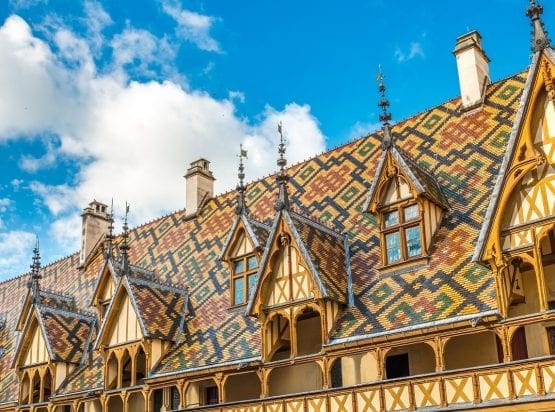
EXPLORE ALL OUR BURGUNDY WINE REGIONS GUIDE
Last updated: April 4, 2025
The southern half of the Côte d’Or is a mecca for lovers of the Chardonnay grape. In the opinion of just about everyone, the top wines of Corton-Charlemagne, Puligny-Montrachet, and Meursault have NO equal in the New World, despite the remarkable progress achieved over the past thirty years. Grand Cru white Burgundy truly embodies something magical and inimitable with its luscious concentration, perfume, minerality, and unsurpassed depth that one rarely sees outside of France.
This side of the Côte de Beaune attracts the greatest hype (and prices) among collectors and oenophiles; there is just one red Grand Cru in the region, the noble Corton. So it often surprises people to learn that over 70 percent of the area’s total output is red, exclusively based on the Pinot Noir grape. But, as far as most collectors are concerned, Chardonnay is the true hero of the Côte de Beaune.
Discover More About French Wine
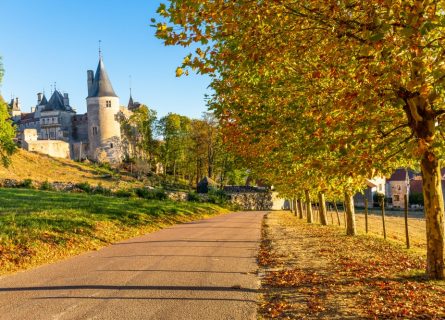
Although the Côte d’Or allows the cultivation of both red and white grapes in most appellations, the Côte de Beaune has long distinguished itself with excellent Chardonnay production despite Pinot Noir significantly outnumbering it in overall volume. The communes of Meursault, Puligny-Montrachet, and Chassagne-Montrachet exemplify this distinction.
Indeed, the name Meursault dates back to the Gallo-Roman period, during which they established a fortified camp with commanding views over the village. However, Europe plunged into chaos after the Western Roman Empire collapsed in AD 476, with rival civilizations attempting to muscle in on Rome’s lost territories.
The Dark Ages and Viticulture
Historians call this period the ‘Dark Ages’ – a time of great political and social upheaval. Yet, as Christianity asserted itself in Western Europe, local Benedictine and Cistercian monasteries began actively engaging in wine growing. This engagement closely links the history of winemaking villages in the Côte de Beaune, like those of the Côte de Nuits, to the church.
Over the centuries, the Dukes of Burgundy donated significant land holdings to the monastic orders, particularly the order of Benedictines at Cluny. Burgundy became the Catholic Church’s most important viticultural territory, a situation that endured until the late 1700s.
Jefferson’s Burgundy
Meanwhile, in the late 18th century, Thomas Jefferson enjoyed a guided tour of Burgundy’s premier vineyards; his writings show a particular reverence for the white wines of Montrachet, which were fetching prices equivalent to Jefferson’s favorite reds: Chambertin, Romanée, and Clos Vougeot.
Endurance of Montrachet’s Fame
However, the architects of the French Revolution took the majority of Le Montrachet from the church and aristocracy. They sold it as bien national (“good of the nation”) to private owners. Nevertheless, the international fame of Montrachet and the other white Grand Crus remained as potent as ever in the 19th and 20th centuries. Today, these venerable whites, produced in tiny volumes, continue to electrify the auction circuit.
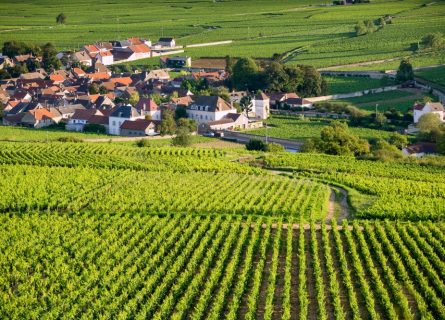
Travel south from Nuits-St-Georges, and you will soon find yourself in the Côte de Beaune. Dominating the northern end of the region is the forest-covered dome of Corton—the Côte d’Or’s most famous hill, which produces exceptional-quality red and white wines. From there, you can head south until you reach the village of Santenay, another source of good-value red Burgundy.
Meanwhile, the best Pinot Noirs from Chassagne exhibit real charm as full-bodied and fragrant reds, while Puligny devotes almost its entirety to Chardonnay. Like the Côte de Nuits, white and red vineyards are classified into four tiers: Grand Cru, Premier Cru, village, and generic.
But while winemakers produce plenty of superlative Pinot Noir in the Côte de Beaune, critics and collectors tend to show more excitement for the zone’s famous Chardonnay Grand Crus. They are a product of total perfection: the east-facing aspect of Montrachet, for example, means that the vines enjoy sun exposure until late evening; mineral-rich limestone soils, meanwhile, offer the ideal balance between drainage and water retention.
However, the deeper clay soils of Pommard, rich in iron, are far more suited to red wine production. Thus, the Côte de Beaune offers a myriad of different soil types and mesoclimates, resulting in a great diversity of wine styles – the hallmark of any fine wine region. The tough and tannic Pinot Noirs of Pommard have little in common with Beaune’s gentle, delicate wines.
Aloxe-Corton
Although winemakers in Aloxe-Corton produce some very respectable village wines, aficionados really only show interest in the two Grand Crus: red Corton and its white counterpart, Corton-Charlemagne. Winemakers cultivate around 160 hectares of vines on the hill and its lower slopes.
As a general rule, they grow Chardonnay on the limestone-rich marls of Corton’s west-facing upper slopes, while the south/east-facing climats serve as Pinot Noir territory. At their best, Corton-Charlemagne and Corton are among the greatest wines of the Côte d’Or. Complex, profound, and very age-worthy.
Beaune
Vineyards flank the handsome town of Beaune to the northwest of its center ville. Many belong to Burgundy’s leading merchants: Drouhin, Jadot, Chanson, and Bouchard Pere et Fils. And, like its neighbors Savigny-Les-Beaune and Chorley-Les-Beaune, the appellation produces a great deal of fruit-driven, sappy Pinot Noir that seldom costs the earth. The Premier Crus of Beaune, including Les Bressandes and Les Teurons, are leading contenders for Burgundy’s best-value red wines.
Pommard
Many regard Pommard as the unofficial red ‘Grand Cru’ of the Côte de Beaune. And there is no denying that the best wines of Rugiens and Epenots (two leading Premier Crus) invoke the tannic heft of Chambertin and the concentration of Nuit-St-Georges. The deep clay soils of Pommard come into their own during very hot and dry growing seasons, such as in 2018.
Volnay
The late critic and author Clive Coates MW described Volnay as “one of the most delightful wines and one of the most rewarding communes in the Côte d’Or.” He’s spot on: winemakers in this compact appellation produce some very fine Pinot Noir, particularly the perfumed and elegant reds from Clos de Chenes and Clos des Ducs. Moreover, Volnay prices remain relatively sensible and affordable (by local standards).
Meursault
This area represents the heartland of fine white Burgundy – growers in Meursault cultivate only a small volume of Pinot Noir. Instead, they concentrate on crafting very complex wines exclusively from the Chardonnay grape. They mature all the best wines in French oak to produce a broad, nutty, and rich dry white, with notable style variations across the different climats.
Many consider Perrieres the pinnacle of achievement in Meursault due to its intense minerality and piercing freshness – rivaling the finest crus of Puligny-Montrachet. But Genevrieres and Charmes can be just as enticing.
Puligny and Chassagne- Montrachet
Two living legends in the Côte d’Or, Puligny and Chassagne-Montrachet, rarely disappoint. Their fame, however, chiefly derives from the five Grand Crus: Montrachet, Chevalier-Montrachet, Batard-Montrachet, Bienvenues-Batard-Montrachet, and Criots-Batard-Montrachet. They represent the Chardonnay grape at its most perfect: power and concentration allied to impeccable balance, elegance, and grip.
Of course, you’ll pay very large sums for the pleasure, a concomitant of small volumes and insatiable demand. So it is worthwhile exploring the exceptional Premier Crus of Puligny and Chassagne, not least Pucelles, Les Combettes, and Dent de Chien. Meanwhile, Chassagne produces the best Pinot Noirs, which are charming, full-bodied, and fragrant reds, while Puligny devotes itself almost wholly to Chardonnay. They’re rarely expensive.
Saint Aubin and Santenay
To the north of Chassagne-Montrachet is St-Aubin, which has underrated vineyards. Located in a little side valley and flanked by the pretty village of Gamay, the appellation delivers well-priced, fruity Pinot Noir reds and some floral Chardonnay. The same could be said of Santenay, the last of the famous communes of the Côte de Beaune. In our experience, the deeply-colored, aromatic reds are Santenay’s biggest triumphs.
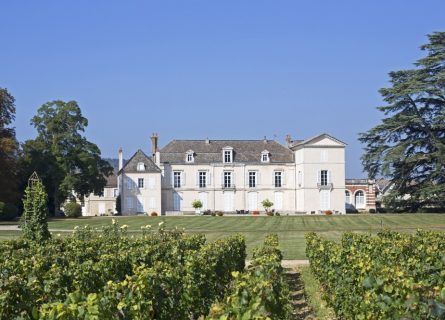
Critics have long debated the reasons for Montrachet’s extraordinary concentration and depth of flavor. Is it the climat’s favorable aspect, the incredibly low yields, the presence of numerous minerals in the soils? We suspect that a combination of the above factors answers the question, although we cannot discount the importance of intelligent and nuanced winemaking in bringing Montrachet to its full fruition.
Traditional Winemaking Techniques in Burgundy
As a rule, Burgundians hand-harvest grapes, crushing the berries before taking the must from the crusher to the press for immediate pressing. However, some growers press whole bunches, arguing this method yields very pure juice with low phenol levels; they typically use this method for sparkling wines. The must then settles overnight, allowing solid material (skins and grape pulp) to fall to the bottom of the vat.
Afterward, it is transferred to the fermentation vessel, most often a French barrique, where the fermentation process begins. Usually, the temperature will rise to about 78°F in the cellar, although certain producers like Leflaive and Etienne Sauzet like to keep it under 68°F. Lower temperatures protect the primary fruit flavors and aromas in the Chardonnay grape. However, winemakers produced wines of great structure and complexity before the advent of heat exchangers and stainless steel.
The Role of Oak in Maturing White Burgundy
If the raw materials are of the highest quality (most Premier and Cru Grand Chardonnays qualify), then 100% new oak can flatter a top white Burgundy. However, many respected domaines, including Louis Carillon, Leflaive, and Coche-Dury, often use less than 40 percent new barrique for their best wines. Only the best climats, such as Montrachet, will be matured in fresh barrels – Comtes Lafon is known to use 100% new wood to fashion very expressive, rich, and yet harmonious Montrachets.
Enhancing Wine Texture Through Bâtonnage
Many growers also like to decant their wines from cask to tank after about 12 months to allow the components to marry, soften, and evolve. Lees stirring is also a common practice in the Côte de Beaune, known as Bâtonnage. This process involves stirring up the dead yeast cells in the barrel, which are packed full of proteins and flavor-enhancing amino acids. Winemakers can undertake regular stirring of the lees weekly in the initial few months to ‘fatten’ the texture and mouthfeel.
Minimal Intervention for Maximum Terroir Expression
Yet the Burgundians do not like filtration and will use it sparingly. The desired outcome for every quality-focused grower is to express their terroirs to the fullest extent. In the Côte de Beaune, 90 percent of the quality of the wine derives from the fruit and not the manipulations. This is something that every great winemaker understands.
Discover more about Burgundy Wine Classifications
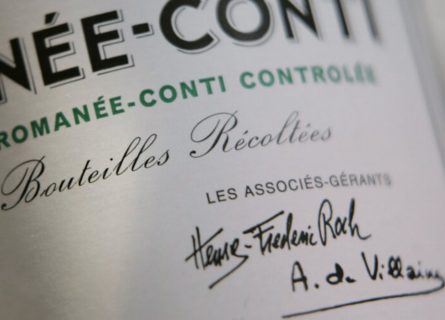
In the past three decades, a radical change has shifted the contours of the global fine wine market. Not so long ago, the ebb and flow of blue chip transactions and auction sales were dominated by a relatively small collection of brands and regions; France’s hegemony in the luxury segment was unparalleled. However, this lucrative arena is increasingly open to suggestions from Chile, Spain, Italy, and Australia – the world’s most important marketplace, La Place de Bordeaux, now represents a diverse cross-section of producers.
They include Penfolds, Seña, Vega Sicilia, and Tuscany’s Masseto. Thus, the French monopoly on fine wine is a distant memory. Today, there is a healthy amount of competition, keeping (almost) everyone on their toes.
The Enduring Appeal of White Burgundy
Yet white Burgundy has been relatively unaffected by this cultural shift. Indeed, despite the proliferation of world-class Australian and New Zealand Chardonnay, collectors are still willing to pay top dollar for Montrachet – the level of interest in alternatives is negligible, at best.
Matthew O’Connell, head of investment at Bordeaux Index, observed:
“There are plenty of exciting non-Burgundian whites, some established, some more emerging, but market demand for white Burgundy is outsized compared to the demand for other white wines.”
He added:
“It is interesting how relatively little progress other regions made during the ‘premox’ crisis.”
The Unique Position of Burgundy in the Wine World
The reasons for this consumer apathy are not entirely clear. Some critics believe that it is simply a question of innate quality; the late author Clive Coates MW did not equivocate on the topic of Burgundy vs the rest.
Coates said:
“Other parts of the world, particularly California and to a lesser extent Australia, can and do produce plenty of competition for village Burgundy. But at Grand Cru level, the best white Burgundies remain unequalled. Elsewhere, the terroirs have not yet been found or have not yet been correctly exploited.”
The Essence of Minerality in White Burgundy
He may have a point. Top white Burgundy delivers a combination of depth, power, and refinement rarely seen outside the Côte d’Or. There is also a widespread notion of ‘minerality’ in white Burgundy, a word with very attractive connotations that appears in many taster’s vocabulary and tasting notes. Yet, it has never been precisely defined. So what is minerality exactly? And who coined the phrase?
For many oenophiles, minerality is a shorthand for ‘tasting terroir.’ In other words, you are tasting the soil as well as the grape; it does not mean, however, that you’re tasting mineral flavors that have migrated through the vine roots and into your glass. Instead, it is a positive term for a synergy between the environment and the wine.
I would describe it as a crystalline note of intense purity: ample freshness allied to terroir-specific salinity. It can appear in a range of grapes, not just Chardonnay. But for that inimitable mixture of richness, complexity, poise, and minerality, few very wine styles can hold a candle to the Côte de Beaune.
Chardonnay is a green-skinned grape varietal native to the Burgundy wine region in France and one of the most popular varieties worldwide.
Find out morePinot noir is a light-bodied red wine varietal closely related to the Vitis vinifera grape and produces the most sought-after red wines in the world.
Find out more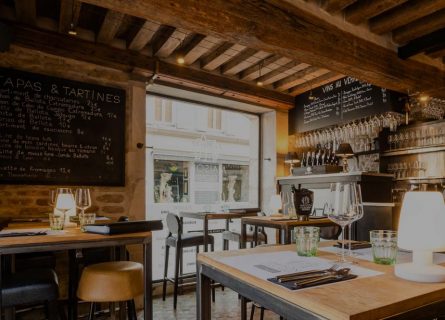
Burgundy has a reputation for excellent gastronomy and warm hospitality. It deserves its reputation: Beaune, the wine capital, boasts exceptional eateries packed to the rafters, serving regional classics such as boeuf bourguignon, cassolette d’escargots (snail cassoulet), and pigeon de Bresse entier rôti au jus – whole Bresse pigeon roasted in its juices.
Furthermore, local restaurants and bistros have earned renown for assisting diners in selecting just the right vintage to complement each dish. Our advice is to heed their words of wisdom.
A Gastronomic Guide to the Cuisine of Burgundy: Read more

Uncover Beaune's vibrant flavors and culinary gems with our expert guides. Plan an unforgettable trip now!
Read more
Uncover Auxerre's vibrant flavors and culinary gems with our expert guides. Plan an unforgettable trip now!
Read more
Uncover Dijon's vibrant flavors and culinary gems with our expert guides. Plan an unforgettable trip now!
Read more
Uncover Lyon's vibrant flavors and culinary gems with our expert guides. Plan an unforgettable trip now!
Read moreIf you would like us to customize an exclusive luxury tour, contact us and let us know your travel plans. We offer luxury food and wine tours for private groups of a mininium two guests. In addition, all of our private, chauffeured tours are available year-round upon request.

